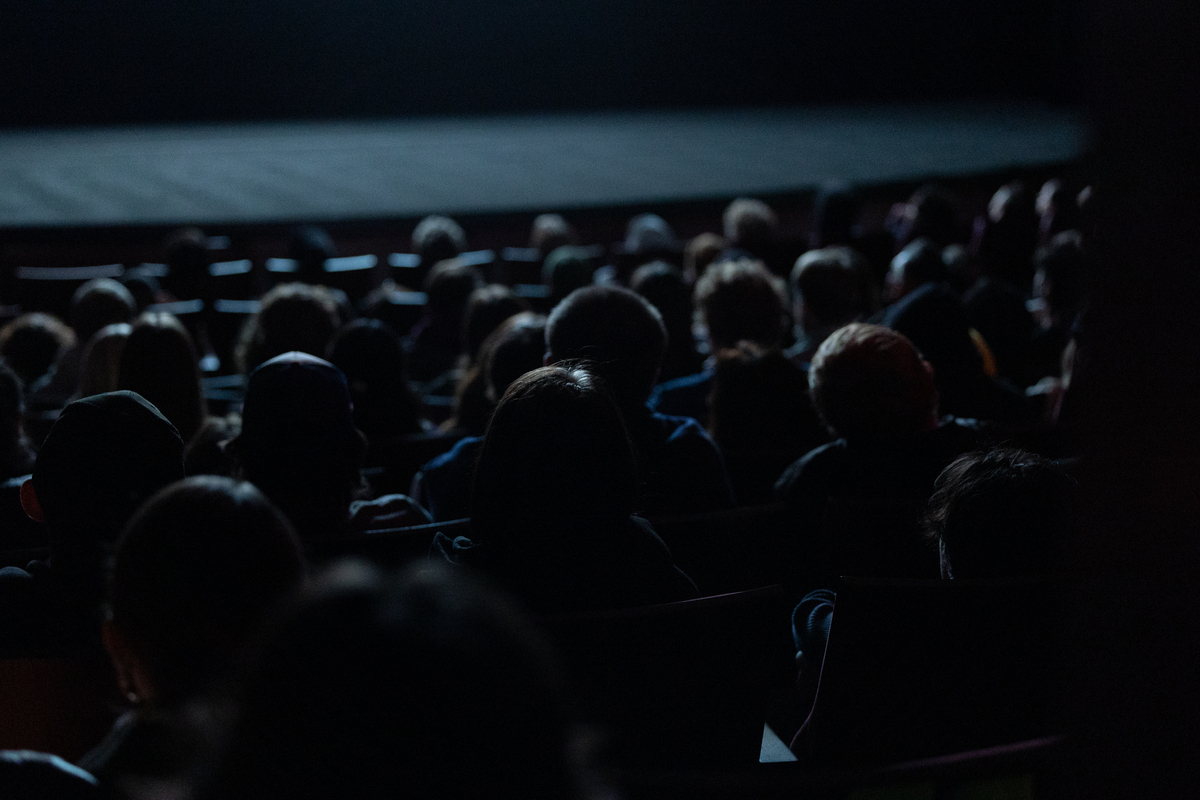Accessibility Commitment & Accommodation Requests
For accessibility inquiries and requests, please complete the Sundance Institute x Chicago 2024 Accommodations Request Form.
Sundance Institute x Chicago 2024 is committed to providing accessible and inclusive experiences for our staff, team, audiences, and artists, in alignment with our core values. We consider inclusion, racial equity, and accessibility the drivers of institutional excellence and we strive to ensure that our programs reflect and embrace these core values.
Our goal is to make all experiences as accessible as possible for all participants. Your support, participation, and feedback are critical to this ongoing effort. An Accessibility Scorecard will be provided on-screen following each event and you are invited to share your feedback using the contact information above.
We are delighted to share our accessible venues and partners for Sundance Institute x Chicago 2024:
- The Chicago Cultural Center
- The Davis Theater, a woman-owned business
- The Reva and David Logan Center for the Arts at the University of Chicago
- Accessibility advisor: Dr. Grishma Shah, LaGrish LLC. Entertainment Psychologist & Film Festival Advisor specializing in DEIA (Diversity, Equity, Inclusion & Accessibility). Woman-owned business; Dr. Grishma is part of the disability community
- CART captioning: Dillon Reporting Service, a Chicago-based, woman-owned business
- ASL interpretation: 5 Star Interpreting, Deaf & CODA-owned business
- Access coordination: INTO Strategies, woman-owned business; owner is part of the disability community
Additional accessibility information and amenities for Sundance Institute x Chicago 2024 includes:
- All venues for film screenings, panel discussions, Shorts Masterclasses, and Sundance Institute Artist Programs Presentations have accessible entrances and seating. We strive to make our spaces as accessible as possible. These spaces are limited and are available on a first-come, first-served basis. We encourage patrons to request a wheelchair space and other accommodations in advance or by speaking with an event staff member as soon as they arrive at any theater. Every effort will be made to accommodate advance and onsite requests; requests made within seven days of the event may not be guaranteed.
- Companion seating is available at all theaters for family and friends of individuals utilizing a wheelchair space. Companion seating refers to the three seats nearest to the wheelchair spaces that may be reserved by those who request wheelchair spacing to ensure they may sit with their group. Individuals sitting in the companion seat section are required to have a ticket to all screenings. Please contact us if you have questions about companion seating at specific theaters.
- For advance wheelchair space and other accommodation requests, please contact us using the Accommodations Request Form.
- Dedicated, experienced Access Coordinators and trained Access Volunteers will staff events at The Chicago Cultural Center, The Davis Theater, and the Logan Center for the Arts.
- Service animals trained to specifically assist people with disabilities are welcome at all venues. All other pets/animals are not allowed.
- Assisted Listening Devices (ALDs – wireless receivers that amplify all film sound in a compatible headset or neck loop with an adjustable volume setting) are available for all screenings. Please note that we have a limited supply of devices. To ensure availability of an ALD, please request in advance by using the Accommodations Request Form. We cannot guarantee availability of ALDs for requests made on-site, but we will do our best to fulfill them.
- All film titles will be screened in open captions; see program for screening specific information.
- All film premieres will provide both live captioning and American Sign Language – English (ASL) interpretation, with reserved seating including sight-lines to live captions and ASL interpreters:
- Fri, 6/28 Luther: Never Too Much premiere at Logan Center for the Arts
- 6:30P Pre-film entertainment & refreshments/bar purchases available. 7:30 p.m. film start. 9:20 p.m. post-discussion start. 10 p.m. event end.
- Sat 6/29 Sugarcane premiere at Logan Center for the Arts
- 1 p.m. film start. 2:55 p.m. post-discussion start. 3:15 p.m. event end.
- Sat 6/29 Your Monster premiere at Logan Center for the Arts
- 8 p.m. film start. 9:50 p.m. post discussion start. 10:15 p.m. event end.
- Sat 6/29 A Different Man premiere at the Davis Theater
- 7 p.m. film start. 9 p.m. post discussion start. 9:45 p.m. event end.
- Fri, 6/28 Luther: Never Too Much premiere at Logan Center for the Arts
- The final screening on closing night will provide both live captioning and ASL interpretation, with reserved seating including sight lines to live captions and ASL interpreters.
- Sun 6/30 Your Monster repeat at the Davis Theater
- 7 p.m. film start. 8:50 p.m. post-discussion start. 9:15 p.m. event end.
- Sun 6/30 Your Monster repeat at the Davis Theater
- All independent film/film industry-themed panel discussions will provide live captioning and ASL interpretation.
- See panel discussions at Logan Center for the Arts and the Chicago Cultural Center.
- Both sessions of the Sat 6/29 and Sun 6/30 (repeat) Sundance Institute Short Film Masterclasspresentation will provide live captioning and ASL interpretation.
- Both sessions of the Sat 6/29 and Sun 6/30 (repeat) Sundance Institute Artist Programs Presentation will provide live captioning and ASL interpretation
For accessibility inquiries and requests, please complete the Sundance Institute x Chicago 2024 Accommodations Request Form.


